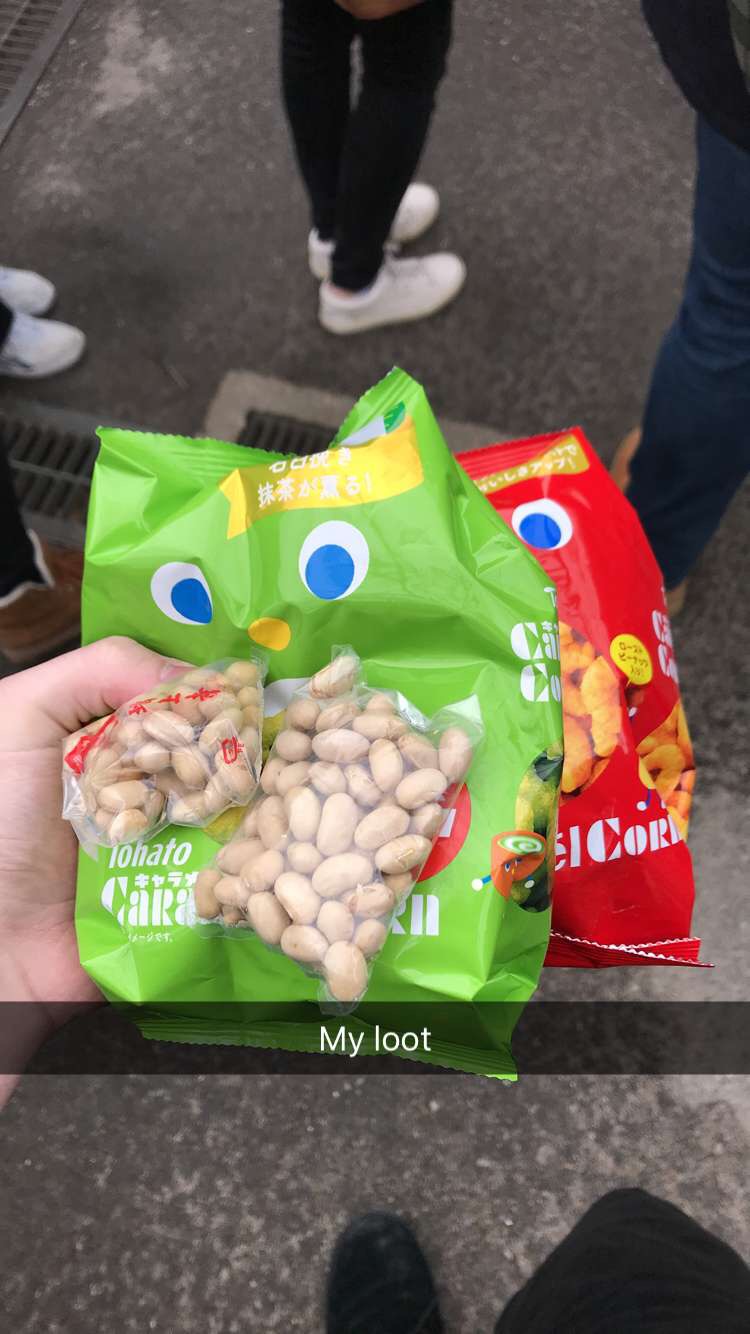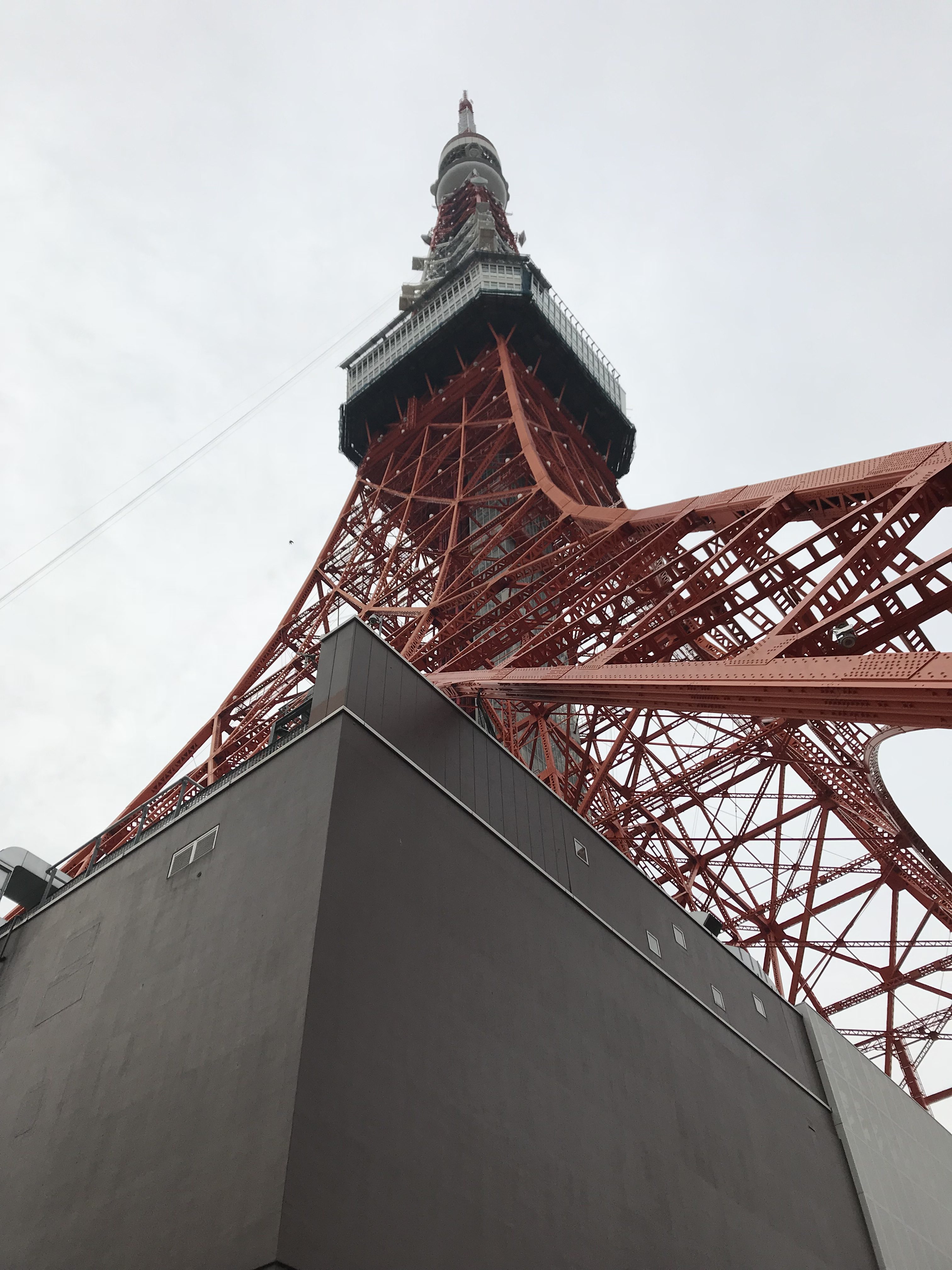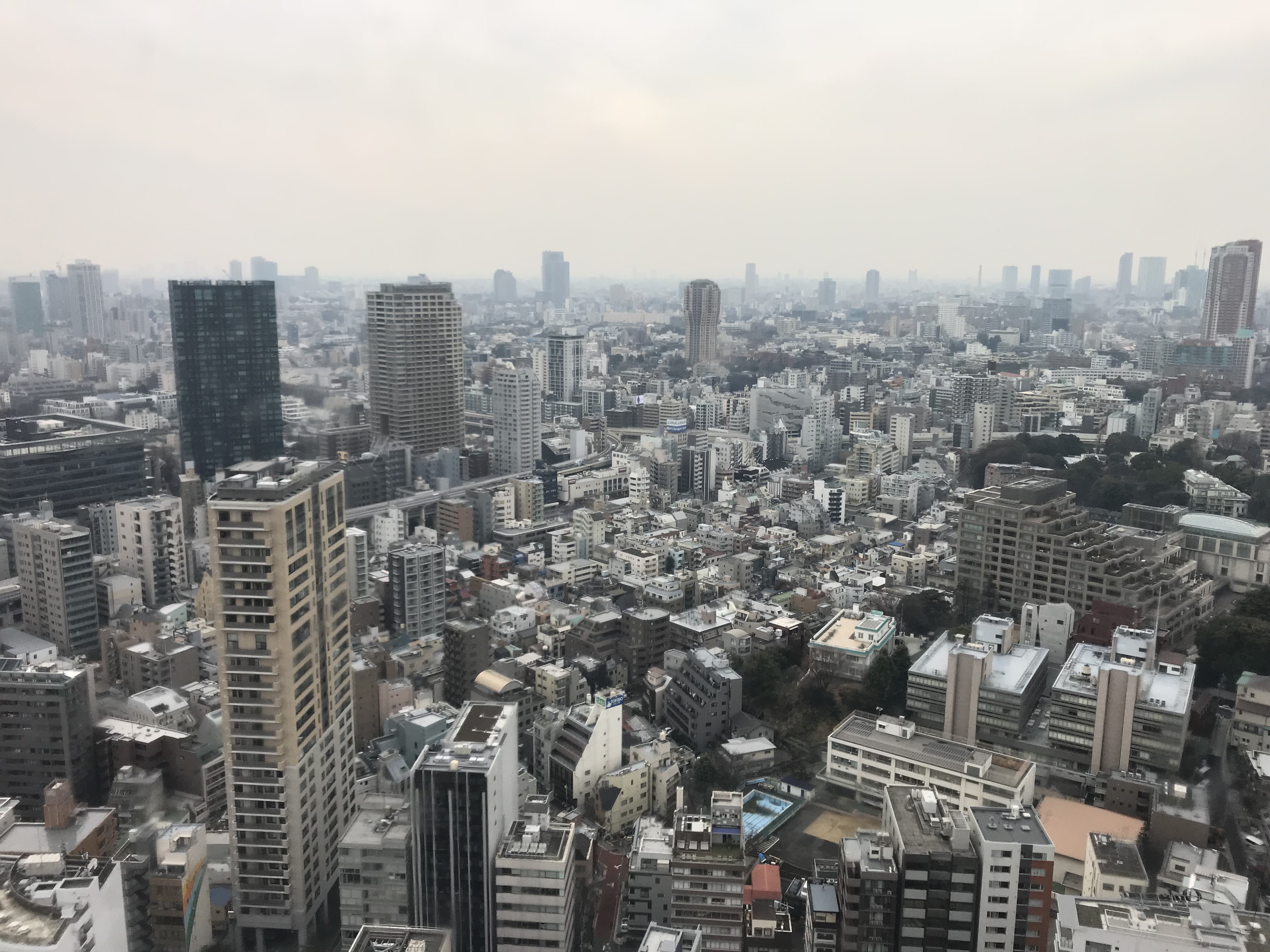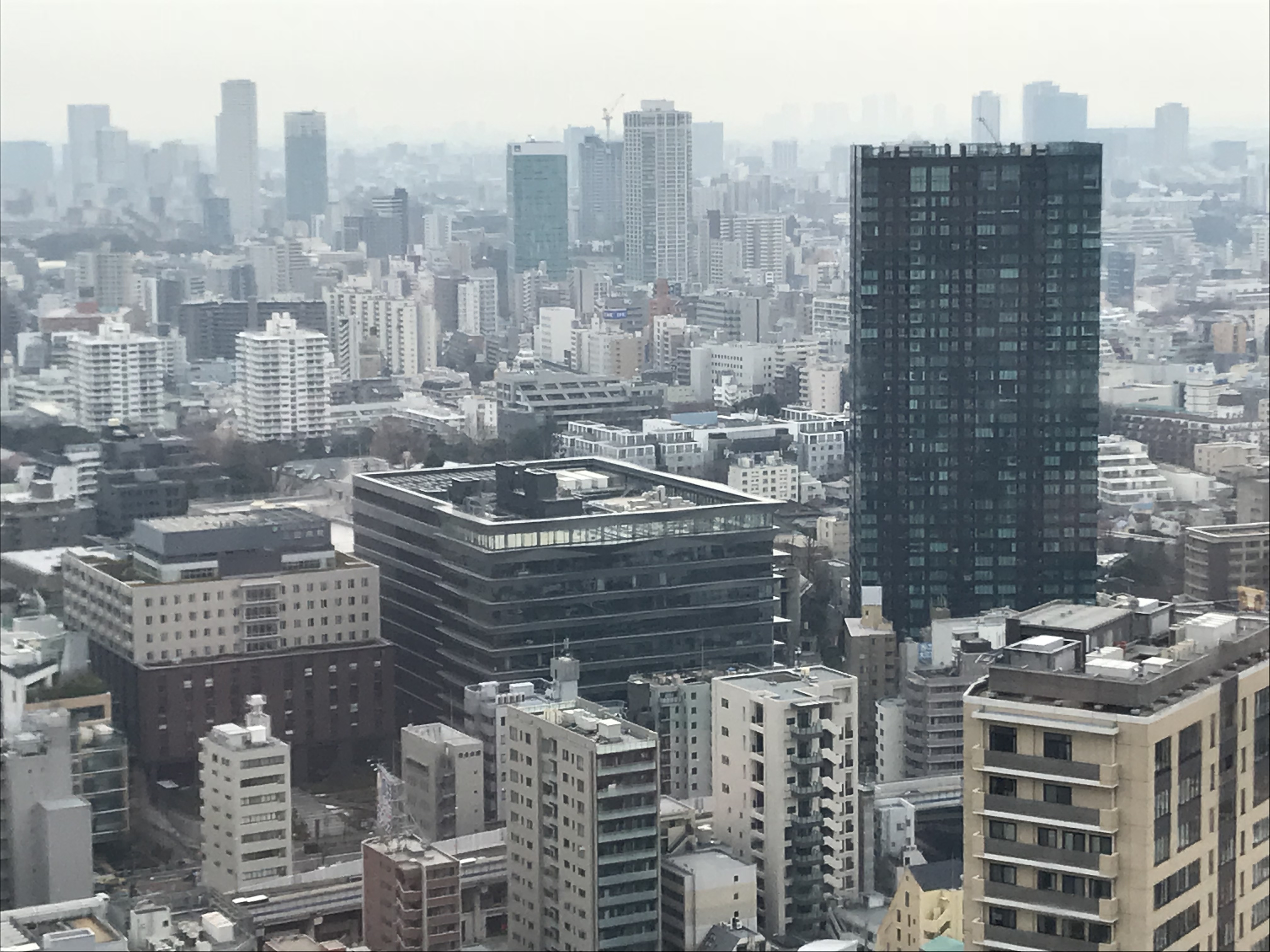Celebrating Setsubun: My Trip to Zōjō-ji and Tokyo Tower

This post is a modified version of an assignment I wrote for my Practical Japanese class. This post is also written from the perspective of a dumb American who barely knows what Setsubun is, so please forgive me. I will update the post with corrections as I see fit.
Saturday, February 3, 2018 was not an ordinary Saturday here in Tokyo, Japan. This Saturday was Setsubun, or the coming of Spring on the old Japanese calendar. I first remember learning about Setsubun back in my high school Japanese class. I had forgotten the significance of Setsubun sadly but I was able to celebrate it as part of my Practical Japanese class at TUJ.
I started the day by commuting to TUJ from Takadanobaba as I usually do. Once everyone arrived, I practiced my self-introduction with my fellow student Jun. Jun and I had actually met before; she helped me recover my lost passport by calling Haneda airport on my behalf. I thanked her for helping me find it. Shortly after, the class and I started walking to Zojoji Temple, located near Tokyo Tower. While we were walking, I was practicing my Japanese with other students. Throughout my conversations, Matsuhashi-sensei occasionally corrected my grammar, as well as my “cultural responses” for lack of a better way to say it. For example, when one of the students complimented my elementary Japanese, I responded with “ありがとうございます” to which Matsuhashi-sensei informed me that I should respond with “いいえ.” The reason why I was supposed to respond with “いいえ,” which translates to “no” in English, was to show humbleness whereas saying “thank you very much” would, in my best guess, be considered arrogant. I once learned about the importance of being humble in Japanese culture but I need to put that principle to practice. Throughout my Japanese conversations, Matsuhashi-sensei kindly continued to help me with my speech, correcting my grammar and occasionally translating on my behalf. Once we arrived at Zojoji Temple, we watched a parade of monks, elders, children, and even dogs walk by towards the main building while a giant bell was rung with a giant hammer in the background. 2018 is the year of the dog which was why there were dogs in the parade; why the dogs were the same breed though, I’m not sure. We quietly waited our turn to take part in the mochi tossing ceremony. Our group, consisting of hundreds if not thousands of people, was the third group to take part in the mochi tossing. We were greeted by a caramel corn mascot who encouraged us to raise our hands in preparation for the mochi tossing. I was not expecting anything relating to caramel corn, to be honest. While I did not catch any mochi, I did catch two small bags of soybeans and two bags of, wait for it, caramel corn. Once the mochi tossing ceremony ended, the class and I headed towards the exit to take part in a cleanse by “rinsing” ourselves with smoke. I believe this is for good luck with the new year and is done as a way to cleanse oneself of evil spirits. I also walked through the Sentai Kosodate Jizo, a cemetery commemorating miscarried children, aborted children, and stillbirths. Once everyone regrouped, we walked over to Tokyo Tower to observe the city of Tokyo and eat special oversized sushi rolls while facing a certain direction for good luck. I didn’t finish mine sadly but it was delicious. After spending a few minutes taking pictures and buying some chopsticks, I continued trying to speak Japanese with some Japanese students. I learned one does acting for commercials while I added another student on LINE (for those of you who are not familiar, LINE is a texting app that is hugely popular in Japan). At this point, most of the study abroad students left. I walked over to Hamamatsucho Station to take the Yamanote Line back to Takadanobaba. I continued talking to Matsuhashi-sensei and discovered that she has been to Seattle, Oregon, and even taught Japanese at the University of Nevada in Reno. At this point, I was overwhelmed with trying to hold conversations in Japanese most of the day but I’m so glad I tried (Clearly, I need to be more humble).
I would say this trip reaffirmed my view on Japanese culture. While there was some craziness during this trip courtesy of Mr. “Happy Tower,” I got to experience traditional Japanese culture by celebrating Setsubun. I was also reminded of the importance of being humble in Japanese society through my incorrect responses to complements I received on my Japanese speaking abilities. Throughout my trip, I have been fortunate enough to have met so many people who are kind, patient, and even understanding of the language barrier I have been experiencing. I have always viewed Japanese people as a kind and humble group of people and my experiences from today, as well as the last month, certainly have reaffirmed my beliefs.
But more on Zojoji Temple. Zojoji Temple is a Buddhist Temple that was completed in 1393. It is located near Tokyo Tower (or shall I say, Tokyo Tower is located near this temple) and it has connections to the Tokugawa family (as in the Tokugawa Shogunate. Yes, those Tokugawa). If you would like to read more about Zojoji Temple, please click here.
Here are some pictures I took throughout this fine Setsubun celebration!







3 Replies to “Celebrating Setsubun: My Trip to Zōjō-ji and Tokyo Tower”
Note: I’m not from Seattle but I’ve been there a couple times